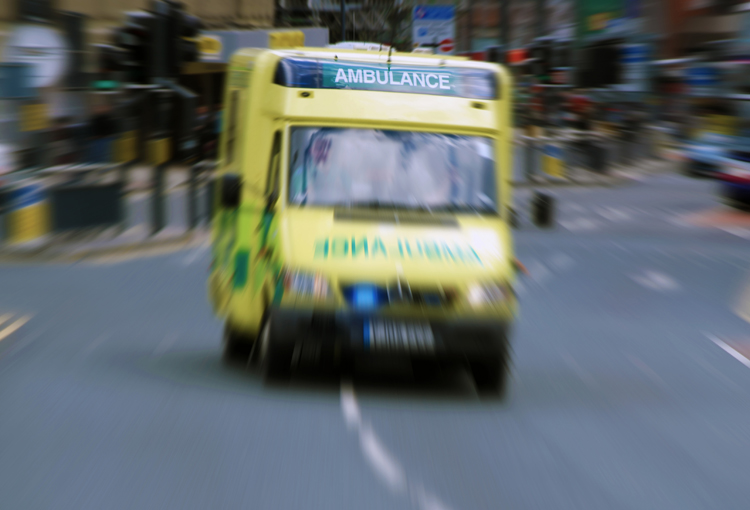Provided by:
East Midlands Ambulance Service NHS Trust
Published by:
The following case study provided by East Midlands Ambulance Service NHS Trust describes how a demand for better falls service was effectively provided by integrated health and social services providers. The emergency lifting equipment referred to throughout the case study are Mangar ELK and Camel lifting cushions.
Details of the initiative
Falls-related calls make up about 20% of all calls received by the East Midlands Ambulance Service (EMAS); approximately 90,000 calls per year. Reducing demand on hospitals and the potential negative outcomes associated with hospital admission for patients and psychological impacts are important priorities.
EMAS covers several counties with a combined population of 4.8 million. The solution developed in the Northamptonshire area (population 700,000) is the Crisis Response Falls Team (CRFT). The CRFT comprises specialist ambulance crews and a social care support team.
The ambulance crews include 7 staff made up of paramedics and emergency care assistants who are trained in enhanced diagnosis and lifting techniques related to falls. The ambulance control’s computer system uses an algorithm to dispatch a CRFT ambulance to people who have fallen. The crews use 2 bariatric ambulances and specialist lifting equipment to ensure people of any size who fall can be helped.
Enhanced diagnosis and faster access to lifting equipment helps to reduce conveyance to the hospital and subsequent admissions. The service prior to the inception of the CRFT was a standard ambulance response, often requiring either a manual lift of a person who has fallen or a further response with appropriate equipment. In both cases, a person who had fallen may have been left in situ for a significant period of time, causing secondary injuries, exacerbating primary injuries and potentially reducing the quality of life or life expectancy.
The CRFT social care support team is provided by Northamptonshire County Council, under a contract with a social care provider. The social care team works with people who have fallen, who are referred by the CRFT ambulance crews, other clinicians or the local authority. The social care team is able to assess people in their own home and identify risk factors for repeat falls, remove trip hazards and install aids to help reduce the risk of repeat falls. They also attend A&E to assess patients and facilitate discharge, undertaking a home visit and supporting patients afterwards, thereby avoiding unnecessary admissions. Patients may be referred to consultant geriatricians for further assessment and support if required.
Falls are the leading cause of mortality in people aged over 75 in the UK
Falls are the leading cause of mortality resulting from injury in people aged over 75 in the UK (NHS Confederation 2012). Delayed responses can exacerbate these injuries and present secondary negative impacts for a patient. Even those that do not suffer an injury from the initial fall can still die if they are not able to call for help.
The number of people aged 60 or over in the UK is expected to reach 20 million by 2031 (NHS Confederation 2012), and the proportion of people living past 85 is also likely to increase significantly. This means falls will make up an even greater proportion of calls made to the ambulance service, placing a greater strain on frontline resources and staff. In addition to this, obesity levels in the UK are increasing.
Obese or bariatric patients may require mechanical lifting equipment to help them when they fall as manual handling techniques place staff at risk of injury. This can result in treatment delays and adds further pressure to the ambulance service. Bariatric ambulances are used as they can accommodate any size of the patient, in contrast to normal ambulances.
Savings delivered
This initiative saves money by reducing the proportion of falls related calls that result in hospital admission. From over 1300 referrals accepted by the CRFT in Northamptonshire in 2012, just over 1000 admissions were avoided. These were as a result of faster access to specialist lifting equipment, enhanced diagnosis to avoid conveyance to A&E and the support offered by the CRFT to facilitate discharge from A&E.
Based on the 2012 cost data, each referral accepted by the CRFT cost £778 and each admission avoided saved £1556. The net saving from 1,050 admissions avoided from 1,311 referrals was therefore approximately £640,000; equivalent to £91,000 per 100,000 population.
The cost of the CRFT response takes into account the additional staff required, training and the cost of the contract with the social care provider to provide support to those who fall. The additional equipment is a non-recurrent capital cost, accounted for under ‘Any costs required to achieve the savings’ below.
Avoiding unnecessary conveyance to hospital helps to avoid unnecessary admissions. The conveyance rate for people who fall attended by the CRFT is around 40% compared to 65% for those attended by a normal ambulance. This is due to the improved diagnosis and management of falls-related injuries provided by the specialist service.
This initiative is also likely to reduce the number of repeat falls due to improved assessment and management of risk factors, although it is not possible to confirm this with the available data. Whilst this saving cannot be accurately quantified and has not been included, the number of falls-related calls in Northamptonshire has stabilised at around 10,500 per year in contrast to previous annual rises, which were believed to be due to demographic changes.
Costs required to achieve savings
Change requires non-recurrent costs equivalent to less than 6 months’ savings. These costs include training CRFT ambulance crews in enhanced diagnosis and treatment of people who fall and the procurement of 2 bariatric-capable ambulances, plus lifting equipment.
EMAS in Northamptonshire was able to procure 2 ambulances second-hand for approximately £7000 each, with additional equipment costs of around £2000 per vehicle. This is a significant saving over the purchase of brand new vehicles. If new vehicles were required the cost would still be less than 1 year’s savings, however. Running costs of the vehicles have been taken into account in the cost of the CRFT response and reflected in the net savings.
Employing a dedicated falls team was considered more economical than providing specialist falls training and equipment to all ambulance crews in Northamptonshire.
Supporting evidence
In Northamptonshire, CRFT intervention either avoided a hospital admission directly by avoiding conveyance to A&E, or facilitated a discharge directly from A&E (therefore avoiding a hospital admission) in 1,206 cases. After further assessment, 156 of these patients were subsequently admitted to a hospital, giving an estimated 1,050 avoided admissions.
The cost of falls to the NHS is estimated at £2 billion per year in bed days, with hip fractures alone adding a further £2.3 billion per year (NHS Confederation 2012).
Quality outcomes delivered
There is a significant improvement in care quality as assessing, lifting and treating people who have fallen can be achieved faster and safer due to the improved training and equipment of the specialist CRFT ambulance crews. All patients who fall will benefit from the greater knowledge and capabilities of the CRFT compared to a standard ambulance response, but particularly those who would otherwise have to wait for a bariatric vehicle.
Care quality is also improved as risk factors for repeat falls are identified and managed appropriately by the CRFT after the first fall. This includes managing physical risks such as trip hazards, installing aids, or referral to a consultant geriatrician for the management of conditions that may exacerbate the risks or consequences of falls. The CRFT social care team supports approximately 1,000 people per year in Northamptonshire.
The social care support team is also able to assist the discharge of patients from A&E and avoid hospitalisation as they can quickly attend to assess patients in A&E and undertake a home visit. These patients are therefore at a lower risk of healthcare acquired infection and other hazards resulting from hospitalisation.
Impact on patients
The CRFT is able to safely lift and move patients who have fallen, who might otherwise be left in place until more specialised equipment is available. This helps to reduce exacerbation of primary injuries and prevent secondary injuries and distress resulting from being immobile on the floor. Patients who can be treated at the scene or in the community with the assistance of the social care team are at a lower risk of healthcare acquired infection.
Impact on patients, people who use services, carers, public and/or population experience
One significant impact of a fall is a fear of falling again. The identification of risk factors, advice and support given and the knowledge that specialist help is available, all help to reduce this fear and improve the quality of life.
An evaluation by the University of Northampton (Campbell 2013) found that patient feedback was positive. Key points given by patients included: building confidence, helping to maintain independent living and to stay at home, providing appropriate support and advice, and access to on-going care. The social support offered by the service was seen as a particular benefit to patients.
Evidence of deliverables from implementation
The initiative commenced in November 2011 in Northamptonshire and an independent evaluation (Campbell 2013) assessed its performance for 12 months.
During this time CRFT intervention reduced hospital admissions either by avoiding conveyance to A&E or by facilitating discharge directly from A&E, in 1,206 cases. 156 of these patients were later admitted to a hospital, giving an estimated 1,050 avoided admissions in the county (Campbell et al 2013).
During the evaluation period, the social care team received a total of 1,546 referrals. 85% of these referrals were accepted by the service. Over 40% of social care referrals originated from the CRFT falls ambulances. Almost 50% of these were made for the purpose of avoiding hospital admissions and 43% sought to aid discharge from A&E departments.
Prior to implementation, a steady rise in falls-related calls was observed, which was believed to be due to demographic changes such as the aging population. A year after implementation the number of falls-related calls has stabilised at around 10,500 per year in Northamptonshire. It is not possible to prove a causal link using the data available, but the initiative is believed to have contributed to this stabilisation by reducing the risk of repeat falls among those referred to the CRFT.
For the full report visit:




